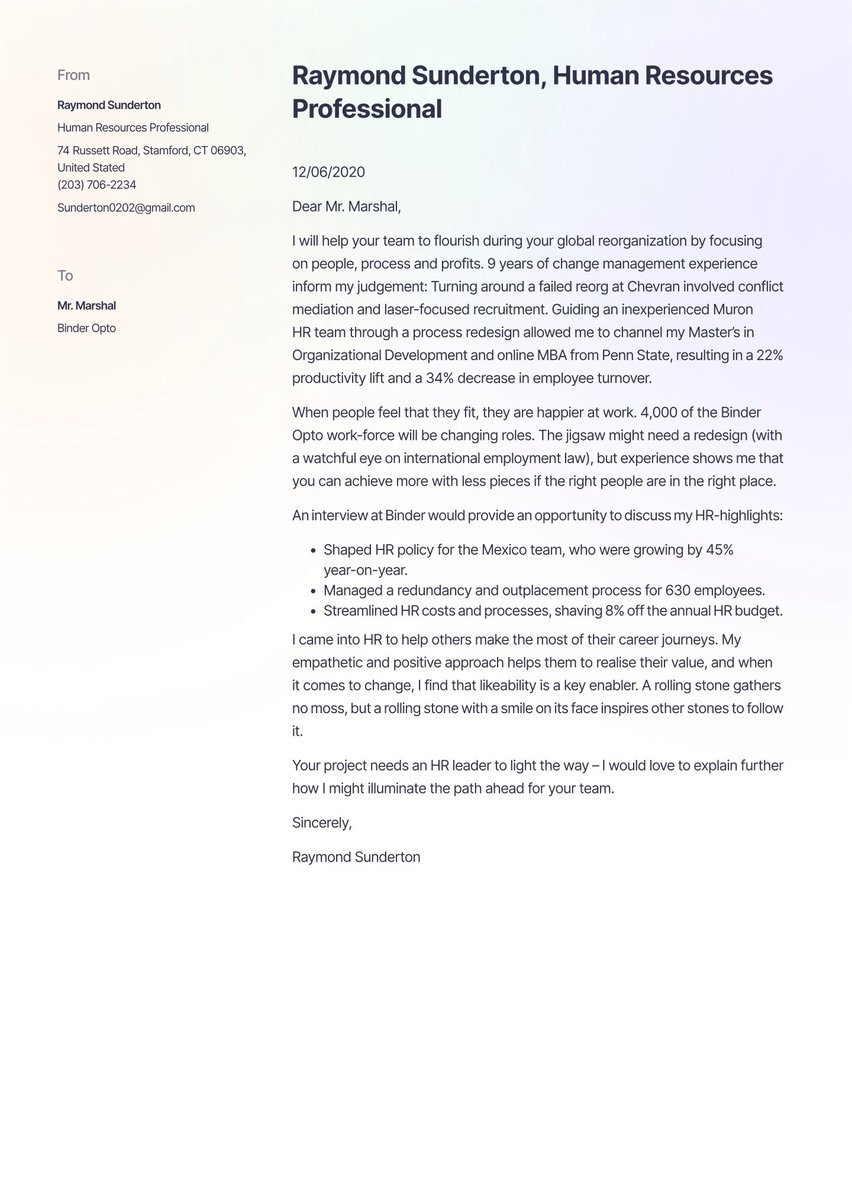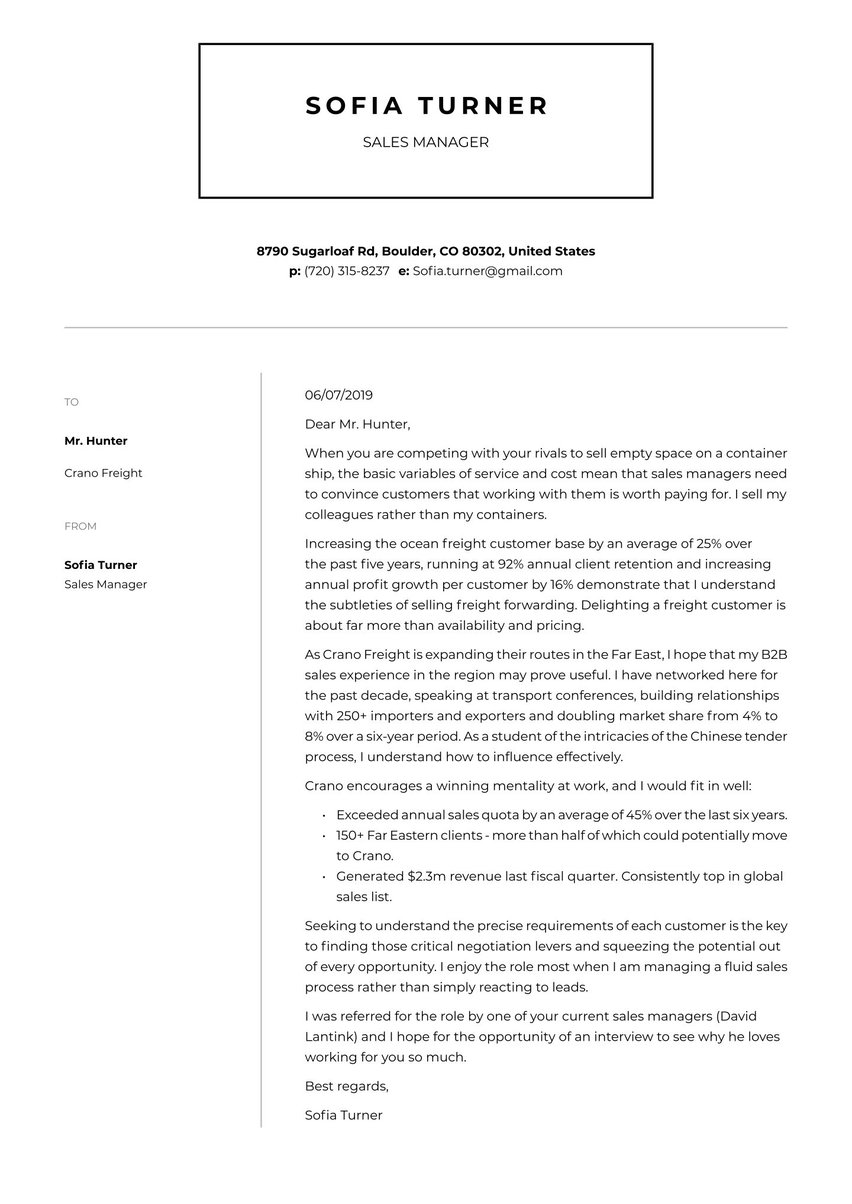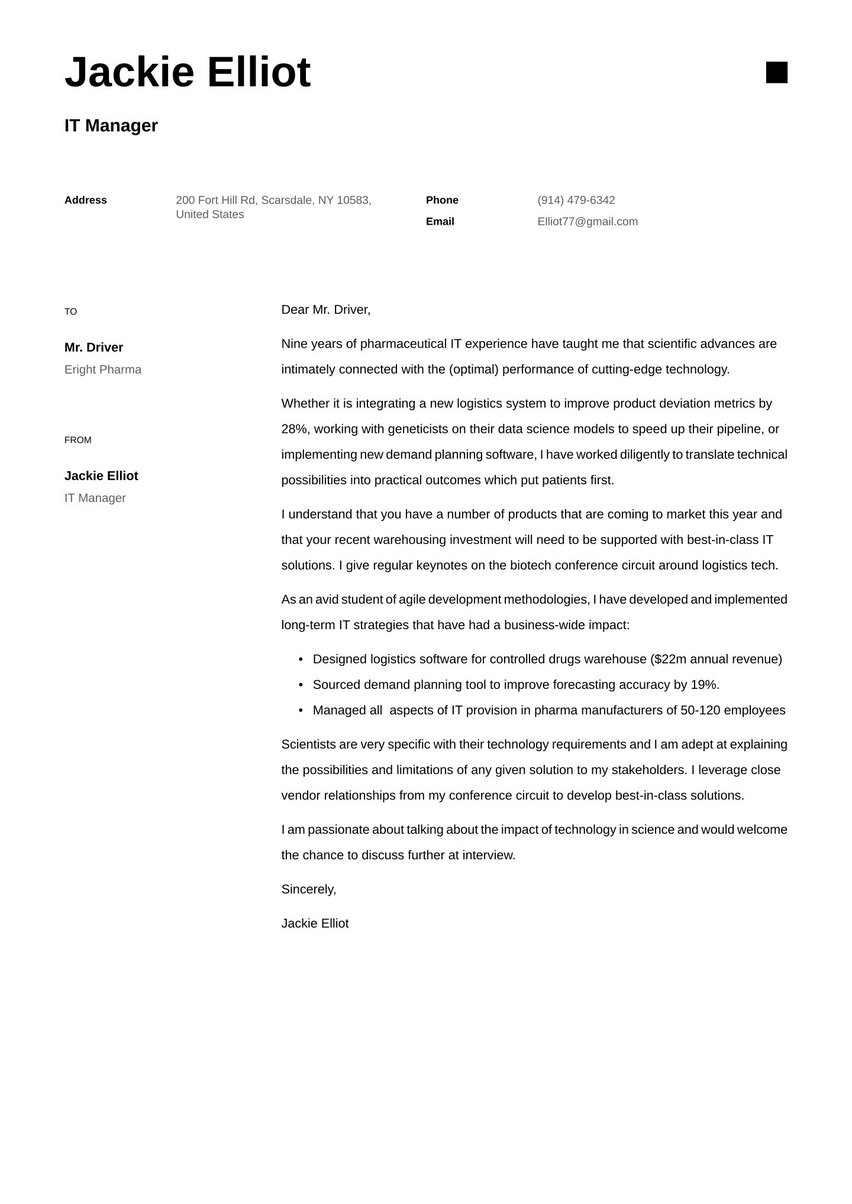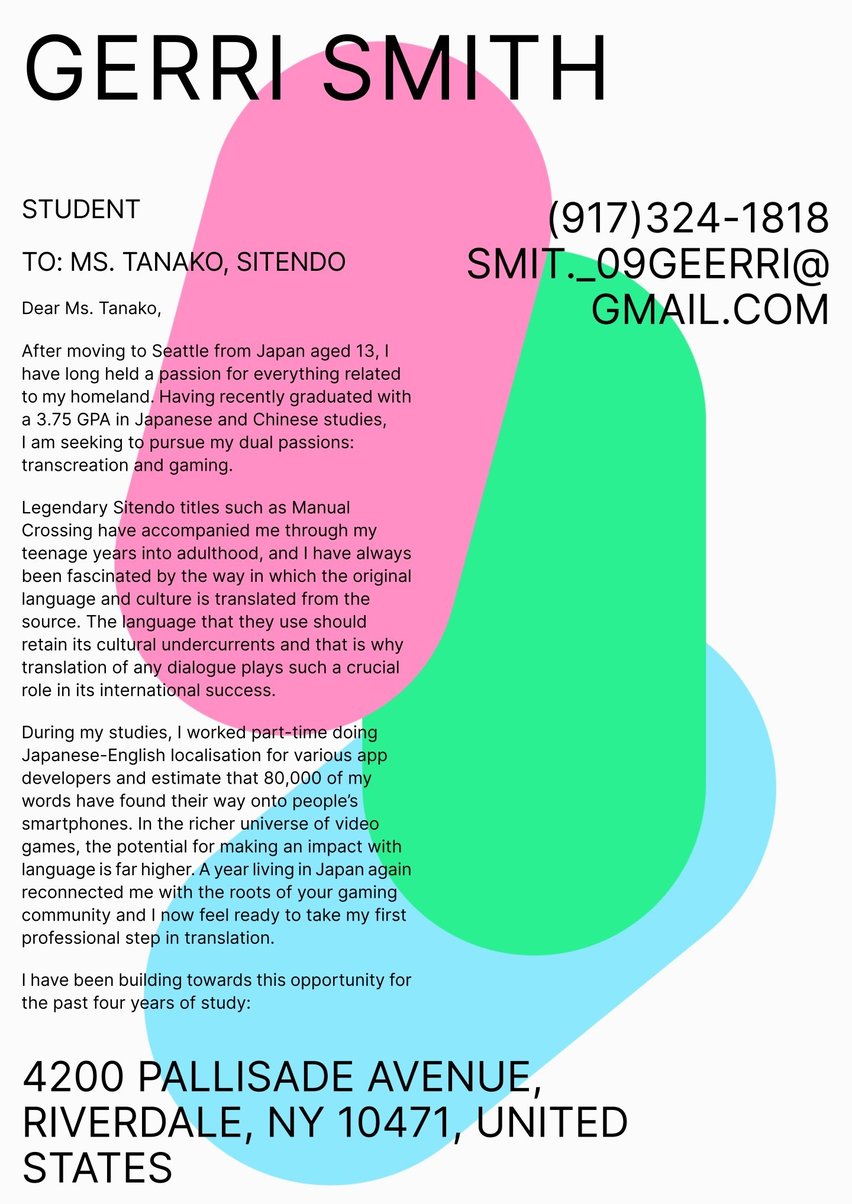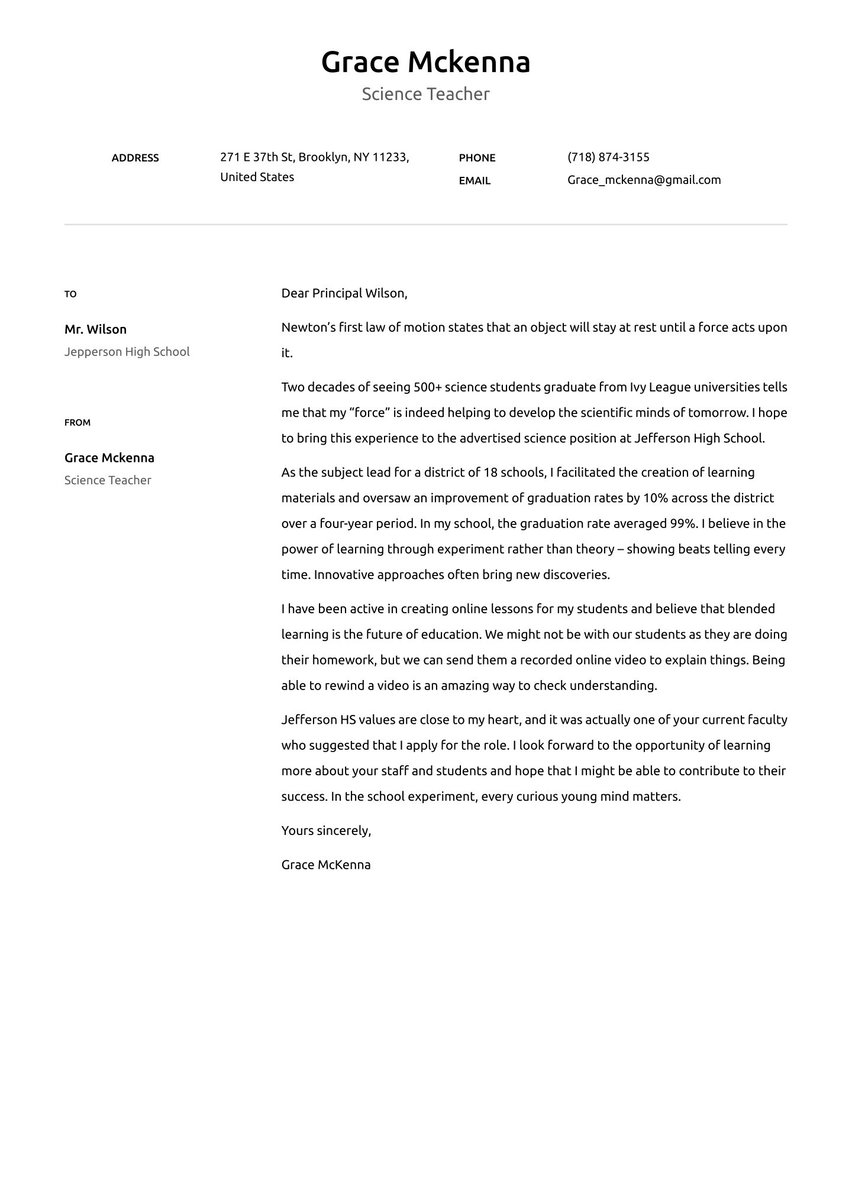All those years of writing countless academic papers make it seem like something you could do in your sleep. As for job applications … well, how hard can it be to knock out a faculty position cover letter?
Be assured that cover letters are in a writing league of their own, and rarely second nature to anyone. That’s one reason Resume.io is here to help. Our job search resources include more than 180 occupation-specific cover letter examples, each paired with a writing guide.
This step-by-step guide aims to demystify the process of writing a faculty position cover letter. Backed by an adaptable faculty position cover letter example, we’ll discuss:
- The best format for structuring your faculty position cover letter
- Speaking to your strengths as an ideal faculty job match in each cover letter section: header, greeting, introduction, body, and conclusion
- Common cover letter mistakes to avoid
For related examples and writing guides in our Education category, check out the following:
Best format for a faculty position cover letter
For anyone accustomed to writing scholarly research papers and dissertations, the simplicity of a cover letter’s format can be a welcome treat. Like any type of letter, it conforms to this outline of parts:
- Cover letter header
- Cover letter greeting
- Cover letter introduction
- Cover letter middle part (body)
- Cover letter closing.
Before taking a closer look at the purpose of each cover letter part and how to optimize the impact, here is some general advice.
Assume your cover letter recipient is busy with many other preoccupations. That includes dozens, if not hundreds, of other faculty job applications to weed through and pour over. Making life easier for that person will earn you bonus marks when your cover letter is:
- Short — no more than 400 words on a single page — but intriguing enough to catch the reader’s attention
- Inviting to read at first glance and all the way through — clean, streamlined, orderly and professionally polished, with legible fonts and ample white space to offset the text-heavy segments
- Tailored to the specific faculty position and hiring institution
Here is an adaptable cover letter example that you can customize for the faculty position and hiring institution.
Dear Professor Donnelly,
The teaching assistant faculty position would be an ideal role for me as I complete my PhD in Applied Linguistics at Brown University. I am fluent in Spanish, French, and Italian and have tutored Brown students in all three languages over the past four years. Having assisted with some cover lecturing last year, I would like to formalize my role within the department.
95% of private students have improved their grades and my extra-curricular linguistics class was attended by lecture halls of 300+ students from across the faculty. Students warm to my accessible teaching style. I enjoy reaching out to the nimble minds of tomorrow. You cannot study a language if you do not have an appreciation for the building blocks of semantics.
My ambition is to become a lecturer after my PhD, so this faculty position would provide the ideal stepping stone for the next couple of years. I already know many of the teaching staff well and a few of them suggested that this role would be a good fit for me.
I enclose a summary of my PhD thesis as I would like to discuss participating in your linguistics teaching as well as the individual languages. I know that staff absence has been an issue over the past few years, and I would like to offer as much academic support as possible.
I enclose my CV alongside nine academic and pedagogical testimonials from your faculty colleagues. I look forward to the opportunity of a formal interview - I would love to share my ideas about how I can make a difference to both students and staff.
Sincerely,
Brain Townsend
Cover letter header
A distinctive cover letter header — traditionally at the top of the page but sometimes along one side — can help your job application stand out from the rest in a “personal brand” fashion. Your identifying information is prominently displayed in a way that gets noticed first and is easy for recruiters to find when they’re ready to get in touch with you later.
Be sure to include your name, occupation title, phone number, and email. It’s a good idea to add your LinkedIn profile URL too, and any relevant professional social media or website links.
A professional pair
It takes very little extra effort to visually match your cover letter and resume design — notably in the header — so it’s obvious that the documents belong together, and to you.
The goal of the cover letter header: Stand out from scores of other faculty job candidates with an attractive cover letter header that makes it easy for recruiters to remember and reach you.
Cover letter greeting
No job candidate can go wrong using this traditional cover letter salutation: “Dear <Dr.> <Mr.> <Ms.> Surname.” It’s not considered old-fashioned and strikes the right balance between formal and friendly.
Typically, faculty position cover letters are addressed to a professor, a department or section head, or perhaps a principal investigator if it’s a research role. In any case, do make every effort to find out who will be on the receiving end of your faculty job application so you can address that person by name in your cover letter greeting.
If no one is named in the advertised faculty job posting, check the university website, LinkedIn profiles, or online publications. Failing those sleuthing efforts, just make a phone call and ask.
But if you still come up empty, your next best option is “Dear Search Committee Members.”
The goal of the cover letter greeting: Start off on a professional but personal note by directly addressing the faculty position recruiter by name.
Cover letter introduction
The introduction of your faculty position cover letter has some basic ground to cover off the top, in the space of just two or three sentences. It must convey who you are, your current academic role, why you are interested in the job, and what makes you an excellent candidate.
The challenge is to prevent the search committee members’ eyes from glazing over reading the same opening lines as dozens of other applicants have put forward. You need a hook that resonates right away, intriguing them enough to keep reading and then learn more in your CV.
Was your faculty job application prompted by a lead from another university professor or colleague that the recruiter and you know in common? If so, your cover letter introduction is the place to mention it.
Hitting the high notes of your brightest accomplishments won’t go quite far enough. An engaging cover letter introduction helps faculty recruiters understand your motivation and how you might contribute to the projects and activities they care about deeply. How will this institution benefit from your expertise and enthusiasm? Is your excitement about this prospect coming across?
The goal of the cover letter introduction: Appeal to the specific faculty hiring needs by emphasizing the value you would bring to this research project.
Here’s the greeting and introduction from our faculty position cover letter sample.
Dear Professor Donnelly,
The teaching assistant faculty position would be an ideal role for me as I complete my PhD in Applied Linguistics at Brown University. I am fluent in Spanish, French, and Italian and have tutored Brown students in all three languages over the past four years. Having assisted with some cover lecturing last year, I would like to formalize my role within the department.
Cover letter middle part (body)
The body of your cover letter substantiates why you belong on this faculty team. To some extent, it’s like a written response to the “Tell me about yourself” interview question that you hope will come later when your application is shortlisted.
Again, the career highlights presented in these middle paragraphs should paint a picture of your future that’s framed from the recruiter’s standpoint. Citing facts and figures to quantify beneficial outcomes where possible, give a few examples of achievements that speak to the hiring university’s needs and values. Focus on skills and experiences that are impressive, relevant, and relatable.
Brief anecdotes also have their place in this cover letter section. Tell a story or two about unique or unexpected discoveries reflecting your curiosity and creativity as a dedicated researcher and teacher.
Evidence of your efforts to learn everything about this faculty role should be implicit here. How compatible are your career goals with this institution’s mission? What about your personality and work style? Who are you eager to collaborate with?
The goal of the cover letter body: Build the recruiter’s confidence in your ability to help advance the university’s research and teaching goals.
This faculty position cover letter sample illustrates what you might include in the middle part:
95% of private students have improved their grades and my extra-curricular linguistics class was attended by lecture halls of 300+ students from across the faculty. Students warm to my accessible teaching style. I enjoy reaching out to the nimble minds of tomorrow. You cannot study a language if you do not have an appreciation for the building blocks of semantics.
My ambition is to become a lecturer after my PhD, so this faculty position would provide the ideal stepping stone for the next couple of years. I already know many of the teaching staff well and a few of them suggested that this role would be a good fit for me.
I enclose a summary of my PhD thesis as I would like to discuss participating in your linguistics teaching as well as the individual languages. I know that staff absence has been an issue over the past few years, and I would like to offer as much academic support as possible.
Cover letter closing
It’s time to end your cover letter while hinting at a professional relationship that’s only beginning. Beware of treating this concluding paragraph offhandedly as just a final formality.
By all means, do the courtesy of thanking the hiring professor or search committee members for their time and consideration of your application. Beyond that, it’s the place to reinforce how interested and enthusiastic you are about this faculty opportunity. And absolutely reiterate why you’re an excellent match for the position.
Be sure to conclude with a call to action that opens the door wider to the next steps. Indicate you look forward to speaking or meeting with the search committee, or at least hearing back soon. Ask if they’d be receptive to a follow-up phone call from you in a week’s time. Anything that puts some onus on the recruiter to respond in some way is fine, as long as it doesn’t sound pushy or presumptuous.
Finally, close with a professional sign-off: your full name below “Sincerely,” or “Best regards.”
The goal of the cover letter closing: End with a call to action that implies your expectation of a response and next steps.
Below is the closing section of our faculty position cover letter example.
I enclose my CV alongside nine academic and pedagogical testimonials from your faculty colleagues. I look forward to the opportunity of a formal interview - I would love to share my ideas about how I can make a difference to both students and staff.
Sincerely,
Brain Townsend
Common cover letter mistakes
It’s a safe bet that writing errors are not something most academic professionals typically need to worry about. Still, no cover letter writing advice would be complete without these precautions about common pitfalls to avoid:
- Failing to customize and personalize your cover letter for each job application, instead sending the same generic letter to multiple employers
- Self-centered angle — “why I need this job” instead of “why you need me on your team”
- Lazy language, word bloat and sloppy sentence construction
- Stilted institutional, bureaucratic or otherwise unnatural writing style — people don’t talk like that!
- Lack of personality, with too much emphasis on technical competence
- Careless typos, spelling mistakes, and grammatical goofs signifying a failure to proofread
- Over-reliance on spell-check and grammar apps that overlook faults such as inconsistent capitalization, date formats, and periods ending bullet points
- Page layout and formatting flaws that sabotage reader-friendliness
- Duplication of resume content and wording
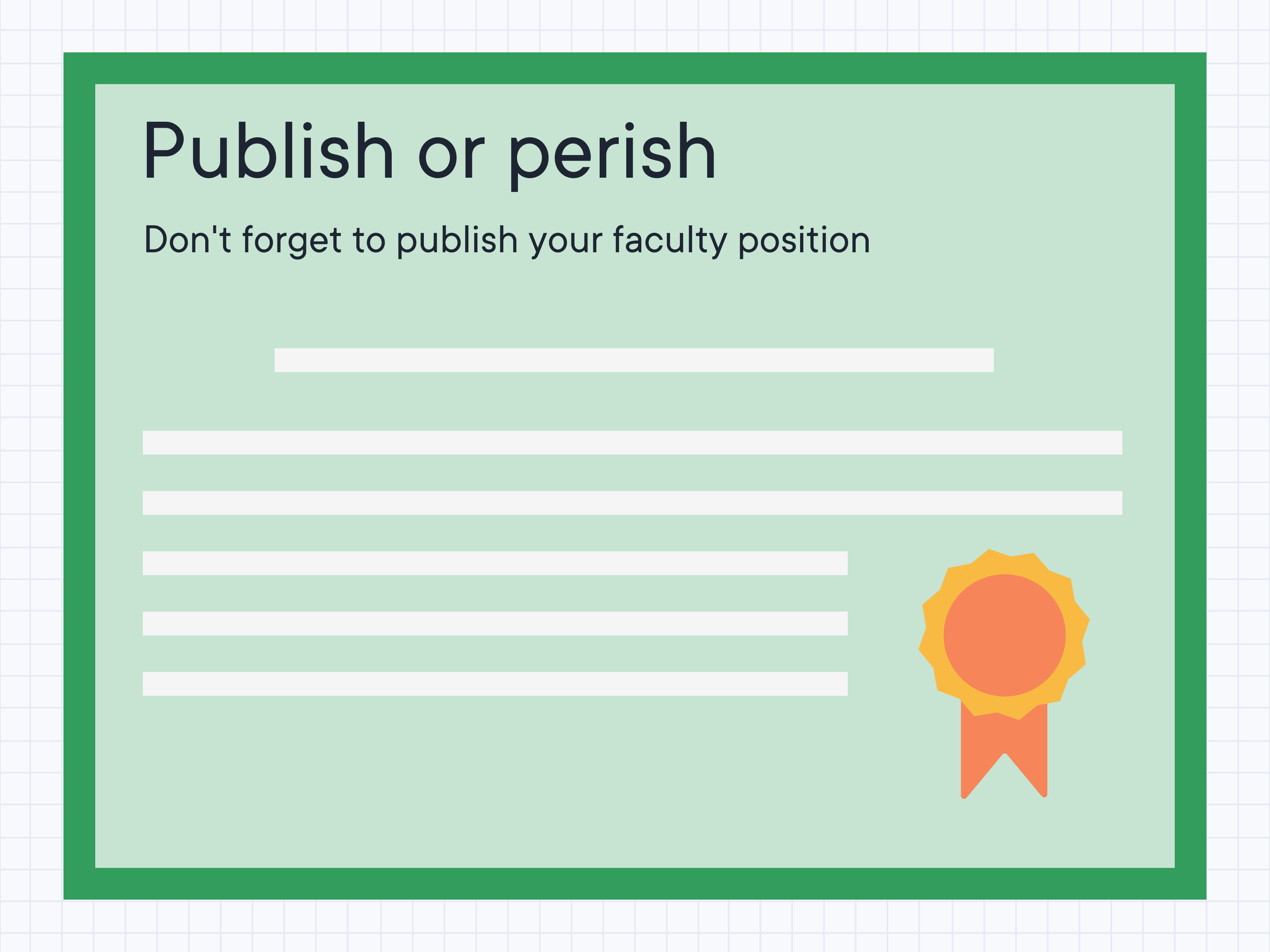
Save yourself the time, hassle and uncertainty that DIY layout, design, and formatting entails. Leave those details up to Resume.io, by using one of our field-tested cover letter templates. It could not be simpler to drop in your own replacement text using our cover letter builder tool.
Key takeaways
- Faculty position applicants are already equipped with strong academic writing skills they can adapt to create a persuasive cover letter.
- Each custom-tailored cover letter should reflect your knowledge of the position and hiring institution while noting how the faculty would benefit from having you on board.
- Let your personality, purpose, and passion shine through in a way that’s not possible in a CV.
- With the bar set high for academic professionals to error-proof their work, a job application leaves no room for slip-ups.












